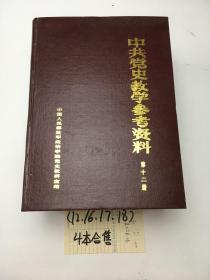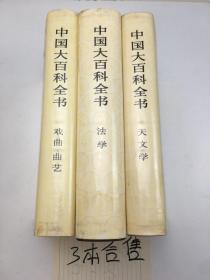
无线与移动通信中的信号处理新技术第2册:单用户与多用户系统(英文版)
¥ 10 3.4折 ¥ 29 八五品
仅1件
河北衡水
认证卖家担保交易快速发货售后保障
作者[美]贾纳科斯 编
出版社人民邮电出版社
出版时间2002-11
版次1
装帧平装
货号1-B12-5-4
上书时间2024-11-08
- 店主推荐
- 最新上架
商品详情
- 品相描述:八五品
图书标准信息
- 作者 [美]贾纳科斯 编
- 出版社 人民邮电出版社
- 出版时间 2002-11
- 版次 1
- ISBN 9787115108296
- 定价 29.00元
- 装帧 平装
- 开本 其他
- 纸张 胶版纸
- 页数 438页
- 【内容简介】
-
《无线与移动通信中的信号处理新技术》丛书,介绍了近年来无线与移动通信中使用的信号处理(SP)工具的最新的重要进展,以及世界范围内该领域的领先者的贡献。本书是两本书中的第2册。本丛书的内容涵盖了范围广泛的技术和方法论,包括噪声与干扰消除、调制解调器设计、移动互联网业务、下一代音频/视频广播、蜂窝移动电话和无线多媒体网络等。
本书(第2册)重点阐述单用户与多用户通信系统。本书内容包括下列专题的最新成果:
·单个或多个传感器阵列的盲同步
·空一时收发分集合并系统
·时变信道的建模
·恒模约束的信号分离
·并行因子分析工具
·CDMA与多载波系统物理层中的多用户干扰删除及多径影响减轻的新方法
·网络层的关键信号处理技术
本书介绍了在世界范围内各种期刊中的研究成果,为通信工程师、研究人员、管理人员、通信系统设计人员和参与最新通信系统设计或构造的同行全面汇集了用于优化单用户点对点链路的先进信号处理技术。 - 【目录】
-
1 TIME-VARYING FADING CHANNELS 1
1.1 Channel Model 4
1.1.1 Deterministic Models 4
1.1.2 Stochastic Models 10
1.1.3 Channel Singular Functions 12
1.1.4 Time-Frequency Analysis of LTV Channels' Eigenfunctions 16
1.2 Coding Strategies for Transmissions over LTV Channels 20
1.2.1 Perfect CSI Available at both Transmit and Receive Sides 21
1.2.2 Comparisons and Asymptotic Bounds 24
1.2.3 Adaptive OFDM 30
1.2.4 Coding with Partial CSI 32
1.3 Channel Estimation and Prediction 35
1.3.1 Cramer-Rao Bound for LTV Multipath Channels 37
1.3.2 Channel Prediction 40
1.3.3 Channel Parameter Estimation 42
1.4 Conclusion 43
1.5 Appendices 45
1.5.1 Eigenfunction Model 45
1.5.2 Time-frequency Representations 48
1.5.3 Cramer-Rao Bounds 49
Bibliography 50
2 SPACE-TIME DIVERSITY 59
2.1 Introduction 59
2.1.1 Diversity 59
2.2 The Set-Up 60
2.3 General Framework for Detection 62
2.3.1 A Bound on the SNR 63
2.4 Space-Only Processing 64
2.5 Space-Time Processing 65
2.5.1 Trace Constraint 65
2.5.2 Eigenvalue Constraint 65
2.5.3 Comparison of the Schemes 66
2.6 Bit Error Rate 67
2.6.1 BER for a Non-fading Channel 67
2.6.2 BER for a Rayleigh Fading Channel 68
2.6.3 BER for other Modulation Schemes 71
2.7 Data Rate 72
2.7.1 Real Symbols 72
2.7.2 Complex Symbols 79
2.8 Discussion 84
2.8.1 Space-only vs. Space- Time Processing 84
2.8.2 Capacity vs. Diversity 85
2.8.3 The Rank One Channel 85
2.8.4 Soft Failure 86
2.9 Conclusions 86
Bibliography 86
3 ALGEBRAIC CONSTANT MODULUS ALGORITHMS 89
3.1 Introduction 89
3.2 Preliminaries 94
3.3 Derivation of the ACMA 99
3.4 Analysis of the Noise-free Case 103
3.5 ACMA in Noise 106
3.6 Asymptotic Behavior 108
3.7 Weighted ACMA 113
3.8 Binary Source Separation 115
3.9 Simulations 117
3.10 Joint Diagonalization 117
3.11 Concluding Remarks 125
Bibliography 126
4 PARAFAC TECHNIQUES FOR SIGNAL SEPQRATION 131
4.1 Introduction 131
4.1.1 Historical Remarks 133
4.2 Theory 133
4.2.1 Notation and Preliminaries 133
4.2.2 k-Rank 136
4.2.3 Identifiability 137
4.3 Algorithms for Fitting the PARAFAC Model 140
4.3.1 Eigenanalysis-Based: GRAM/ESPRIT 141
4.3.2 Alternating Least Squares 142
4.3.3 Separable LS, Gauss-Newton and Levenberg-Marquardt 143
4.3.4 Compression/COMFAC 143
4.4 Determining Three - Way Array Rank 147
4.5 Applications - Part I: Data Modeling 151
4.5.1 Extracting Trilinear Structure out of Bilinear-Vandermonde Data 151
4.5.2 CDMA 152
4.5.3 Multiple-Invariance Array Processing 156
4.5.4 Deterministic Blind Beamforming 159
4.5.5 Fluorescence Spectroscopy 161
4.5.6 Sensory Profiling 162
4.6 Applications -Part II: Examples 164
4.6.1 Numerical Example: COMFAC Performance and the CRB 164
4.6.2 OFDMA with Base Station Antenna Array Example 164
4.6.3 Fluorescence Spectroscopy Example 166
4.6.4 Sensory Profiling Example 167
4.7 PARAFAC Extensions: PARAFCA2 170
4.8 Conclusions 171
Bibliography 172
5 MULTIPATH MITIGATION IN CDMA SYSTEMS 181
5.1 Introduction 181
5.2 Signal Model 183
5.2.1 Vector Models 186
5.2.2 Analogies with Array Processing Models 187
5.3 Receiver Design 188
5.3.1 Matched Filter and RAKE Receivers 188
5.3.2 MMSE Receivers 189
5.4 Minimum Variance Receivers 189
5.4.1 The Multipath Case 190
5.4.2 Performance Analysis 192
5.4.3 Illustrative Examples 197
5.4.4 Time Recursive Implementations 198
5.4.5 Convergence 203
5.4.6 Numerical Examples 205
5.5 Multipath Mitigation in Long Code Systems 207
5.5.1 Parameter Estimation in Long Code Systems 208
5.5.2 Blind Channel Estimation 210
5.5.3 Idenfifiability Issues 213
5.5.4 Single-User Receivers 213
5.5.5 Numerical Examples 214
5.6 Conclusions 216
Bibliography 217
6 BLOCK SPREADING FOR MULTIPATH-RESILIENT GENERALIZED MULTI-CARRIER CDMA 223
6.1 Block Spreading Model 225
6.1.1 Filterbank Block Precoding 226
6.1.2 Asynchronous Multirate Receiver Design 229
6.1.3 Quasi-Synchronous Model 231
6.1.4 AII-Digital Unitication of Multi-carrier CDMA 232
6.2 GMC-CDMA for MUI/ISI-free Multirate Transmissions 237
6.2.1 Single Rate GMC-CDMA: AMOUR 237
6.2.2 GMC-CDMA: Multirate Case 247
6.2.3 Receiver Design: Blind Equalization 249
6.2.4 Underloaded Systems 251
6.3 Performance and Comparisons 251
6.4 Conclusions and Discussion 157
Appendix 6.A Dual Vandermonde-Lagrange Transceivers 257
Appendix 6.B Modulo-Interpretation of GMC-CDMA 259
6.B.1 The Modulo Interpretation 259
6.B.2 Re-designing the Codes 260
Bibliography 261
7 MULTISTAGE INTERFERENCE CANCELLATION ALGORITHMS FOR DS/CDMA SIGNALS 267
7.1 Introduction 267
7.2 Multiuser Signal Model 268
7.3 Overview of CDMA Receivers 270
7.3.1 Conventional Detector 270
7.3.2 Optimum Detector 272
7.3.3 Linear Detectors 273
7.3.4 Decision-Feedback Detectors 274
7.4 Successive Interference Canceler (SIC) 274
7.4.1 SIC Computer Simulations: Synchronous Signals 277
7.4.2 SIC Computer Simulations: Asynchronous Signals 280
7.5 Exact BER Analysis 281
7.5.1 Synchronous Signal Model for Two Users 282
7.5.2 Exact BER of the SIC Receiver 283
7.5.3 Exact BER of the SIC with Amplitude Mismatch 287
7.5.4 Numerical Example: Exact Analysis 288
7.6 Approximate BER Analysis 288
7.6.1 Approximate BER of the SIC Receiver 289
7.6.2 Approximate BER of the SIC with Amplitude Mismatch 291
7.6.3 Numerical Example: Approximate Analysis 292
7.7 Adaptive SIC (ASIC) 293
7.7.1 ASIC Implementation 293
7.7.2 ASIC Computer Simulations 295
7.8 Parallel Interference Canceler (PIC) 297
7.9 BER Analysis for the PIC 299
7.9.1 BER for Stage 1: Exact Analysis 299
7.9.2 BER for Stage 2: Exact Analysis 300
7.9.3 BER from Stage j-1 to Stage j: Approximate Analysis 303
7.9.4 PIC Computer Simulations 305
7.10 State-Space Analysis 308
7.10.1 Convergence of the Error Probabilities 308
7.10.2 IC Receiver Design 311
7.11 Conclusion 311
Bibliography 313
8 SIGNAL PROCESSING BASED COLLISION RESOLUTION 315
8.1 Packet Collision in Access Aloha Ad Hoc Networks 317
8.1.1 Random Access Ad Hoc Networks 317
8.1.2 Packet Collision 318
8.2 Packet Collision Model 320
8.2.1 Channel Model 320
8.2.2 Signal Structure 322
8.2.3 Assumptions and Properties 323
8.3 The Training-based Zero Forcing Receiver 324
8.4 The Semi-blind Least Squares Smoothing Receiver 326
8.4.1 The Elimination of ISI 327
8.4.2 The Reduction of MAI 331
8.5 Blind Receivers 333
8.6 Resolvability Analysis 335
8.6.1 Collision Resolvability 335
8.6.2 Resolvability of the Training-based ZF Receiver 336
8.6.3 Resolvability of the Semi-blind LSS Receivers 338
8.6.4 Resolvability Comparisons 339
8.7 Network Performance Analysis 341
8.7.1 Network Model 341
8.7.2 Node and Network Reception Matrices 342
8.7.3 The Markov-Chain Characterization of the Network 344
8.7.4 Throughput, Delay and Stability Analysis 345
8.8 Numerical Examples 347
8.8.1 Resolvability Comparison 347
8.8.2 Network Performance Comparison 347
8.9 Concluding Remarks 351
Appendix 351
Bibliography 354
9 NON-DATA-AIDED DIGITAL SYNCHRONIZATION 357
9.1 Introduction 357
9.1.1 Classical Approaches to NDA Synchronization 358
9.1.2 Chapter Summary 360
9.2 Signal Model 360
9.3 Classical Unconditional Maximum Likelihood (UML) Approach 365
9.3.1 NDA Symbol Timing Estimation 367
9.4 Conditional Maximum Likelihood (CML) Approach 371
9.4.1 Joint Parameter Estimation 375
9.4.2 CML-based NDA Synchronization 376
9.4.3 CML Timing and Frequency Synchronizers for Linear Modulations 377
9.4.4 CML Timing and Frequency Synchronizers for Binary CPM Signals 382
9.5 Minimum Conditioned Variance Compressed Likelihood Function (MCV-CML) Approach 384
9.6 Bounds and Performance Evaluation 389
9.6.1 The Modified Cramer-Rao Bound (MCRB) 390
9.6.2 The Unconditional CRB (UCRB) 393
9.6.3 The Conditional CRB (CCEB) 395
9.7 Conclusions 398
Bibliography 400
10 EXPLOITING ANTENNA ARRAYS FOR SYNCHRONIZATION 403
10.1 Introduction 403
10.2 Data Model 406
10.3 Maximum Likelihood Estimator 409
10.3.1 Consistency 411
10.3.2 Cramer-Rao Bound 412
10.3.3 Computation of the Estimates 413
10.4 An Asymptotically Equivalent Estimator 414
10.4.1 Proof of the Asymptotic Equivalence 414
10.4.2 Calculation of the Weighting Matrix 415
10.5 Heuristic Derivations 416
10.5.1 Series Expansion of the Logarithm 416
10.5.2 Eigenvalue Weighting 417
10.5.2 First-Order Approximation 417
10.6 Calculating the Estimates with IQML and ESPRIT 418
10.6.1 IQML Algorithm 419
10.6.2 EAPRIT Algorithm 420
10.7 Simulation Results 421
10.7.1 Simulation Parameters 421
10.7.2 Effect of the Number of Samples 422
10.7.3 Effect of the Number of Sensors 424
10.7.4 Effect of the SIR 425
10.7.5 Closely Spaced Signals 425
10.7.6 Performance Using a Search 426
10.8 Conclusions 428
Appendix 10.A 429
Bibliography 430
点击展开
点击收起
— 没有更多了 —

























以下为对购买帮助不大的评价